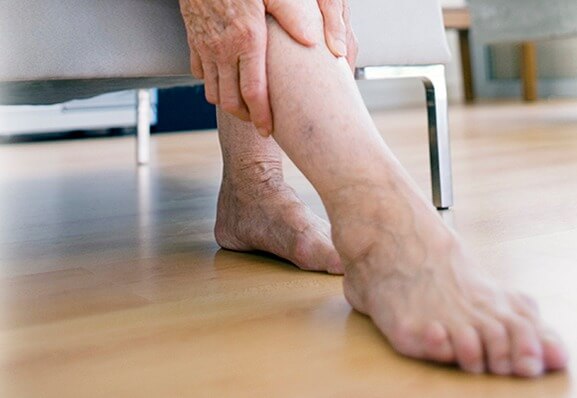A non-invasive index test that measures and compares the blood pressure at the ankle to the blood pressure in the arm.
Explore All Conditions
Peripheral Vascular or PVD
PVD is commonly referred to as a collection of circulatory system diseases and any disorder that affect blood vessels.
Do you suffer from leg pain, aching, swelling, restless legs, or cramps? Have you become self-conscious about unsightly, protruding, enlarged veins visible on your legs? You’re not alone; over 40 million Americans suffer from varicose veins, with an estimated 2 million seeking treatment annually! Many people who suffer from spider and varicose veins may not even know the signs and symptoms they are experiencing are due to an underlying vascular disease.

Request a Free Screening*

Symptoms of PVD
- Pain
- Aching of the legs
- Throbbing of the leg or muscles
- Leg or ankle swelling
- Leg fatigue or tiredness
- Itching
- Tightness of the legs
- Heaviness of the legs
- Spider Veins
- Varicose Veins
- Skin ulcers (open sores)
- Leg, foot or muscle cramps at night (charley horse)
- Restless legs (uncomfortable feeling in your legs or urge to move your legs)
- Brown colored skin, often near the ankles or lower part of the legs
- Leg ulcer (open sores or poorly healing wound)
- Pain with waking that stops when you rest
Common PVD Conditions
PAD is a condition where plaque build-up causes the narrowing of the blood vessels which reduces blood flow to the limbs, and it is also known as atherosclerosis.
DVT is a very serious but preventable condition which occurs when a blood clot forms deep inside the veins.
DVI is a condition where veins have difficulty returning blood to the heart.
SVI is a condition where veins become too weak, large and twisted because of valve damage and fluid buildup.
Lymphedema is a condition that affects the lymphatic vessels which can result in selling as fluid pools in the legs and feet.
CLI is a result of advanced staged PAD which means there is significant blockage in the arteries reducing blood flow to the legs and feed resulting in wounds that can lead to amputation.
DVO is a condition where the veins become compressed or blocked which restricts blood flow to the legs and feet.
Diagnostic Procedures
Another non-invasive test which uses sound waves to create a color map of the blood vessels and examines the blood flow in the legs.
TCOM is a local, non-invasive measurement reflecting the amount of oxygen that has diffused from the capillaries through the first layer of the skin.
CTA is a calculated tomography technique used to visualize arterial and venous vessels throughout the body.
An MRA is a type of imaging tool that uses magnetic wave and radio energy to locate and measure the severity of a blocked blood vessel.
IVUS is a special imaging process that uses a small catheter to image the interior of the blood vessels and to measure plaque build-up from within the arteries.
Contact Us for a Consultation
United Vein & Vascular Centers are Nationally IAC accredited facilities which means they have undergone a thorough review of their operational and technical components by a panel of experts in the field .Your vein health and quality of life are important. Treatment for common vein conditions like spider veins or varicose veins are typically quick and easy, requiring no down time or hospital stays.
There’s never been a better time to address your vein health issues. Most insurance providers including Medicare cover vein treatments; feel free to ask us about your coverage. We’re available to answer any questions or address any concerns you may have about vein health or treatment. Call us today to talk about taking charge of your vein health.